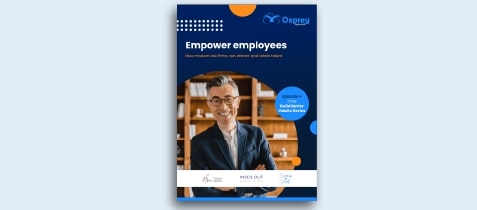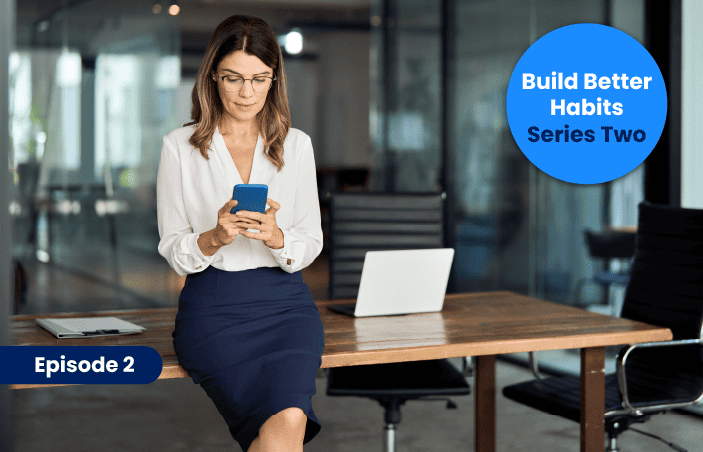Contents
Shaun Jardine’s best practices for implementing a pricing strategy that reflects value for your firm, lawyers, and clients
In this conversation, Shaun Jardine – former CEO of a top 200 law firm – shares his decades of experience to help you better communicate the value of your lawyers to win more new business as well as implement value-based pricing to increase profitability across the firm.
Shaun Jardine, owner of Big Yellow Penguin and author of Ditch The Billable Hour!, joined me in episode three of our Empowering Law Firm Leaders series. In this conversation we discuss how legal leaders can reduce write-offs, improve work-life balance, and increase profitability.
In this conversation we cover:
- Why firms need to ditch the billable hour
- How to successfully implement value-based pricing (VBP)
- The role of the Pioneer Group in driving the VBP project
- How to manage failure
Shaun’s three lessons for running a successful modern law firm
- Surround yourself with good people
- Delegate – life becomes a lot easier when you can delegate to other qualified people in marketing, HR, operations
- Never ask anyone to do anything you wouldn’t be prepared to do yourself
Why should law firms ditch the billable hour?
In Shaun’s book – Ditch The Billable Hour! – he references Matt Homann’s 10 rules about the billable hour. Some favourites include:
- Rule number six: Most businesses succeed when people work better – law firms succeed when people work longer – your clients understand this and resent you for it.
- Rule number eight: The hardest thing to measure is talent; the easiest thing to measure is time.
- Rule number eleven (Shaun’s own): We make pricing mistakes all the time; they’re called WIP write-offs.
These rules highlight some of the reasons why the billable hour is no longer serving the business. Shaun explains that primarily clients don’t like the billable hour: “If you give clients a choice of fixed prices they’ll love you for it. So the decision to ditch the billable hour is client-led first of all.”
But legal professionals also don’t want to live in six-minute units: “And [lawyers are] pretty terrible at time recording anyway – there are loads of mistakes. Plus they discount, even double or triple discount, which impacts the profitability of the business.”
Shaun explains that with VBP you get a “three-way triangle of happiness”. Clients are happier with their options, lawyers are happier (which is key for the current battle for talent) and the business is more profitable as a result.

About Shaun Jardine
Shaun is a non-practicing solicitor and previously CEO of a top 200 UK law firm for over four years. Established in 2021, Big Yellow Penguin aims to encourage and help law firms adopt practices, including value-based pricing, which will make their futures more secure, both financially and operationally.
Shaun’s focus on VBP happened after attending a conference in Dallas, as he explains: “I met a lot of lawyers who were implementing VBP and I thought, ‘wow! This is a much better way of doing professional services than charging six-minute units’. And so I came back to the UK and was in a fortunate position to implement it at my firm, which took off. And now that’s what I’m doing – helping law firms get away from the billable hour to have a more profitable business and happier staff.”
Why is focusing on outcomes important for VBP?
To successfully communicate the value you provide to clients it’s important to focus on the outcomes you deliver. Shaun explains that: “Clients don’t care about the process. They care about whether they’ll be able to move into their dream house before half term, and they care about getting out of a relationship so they can be happy again.”
Everyone assumes that most people want the cheapest price, but that’s not the case. We don’t all buy the cheapest bottle of wine, car, or clothes.
Lawyers don’t often discuss what the client wants to achieve or what success looks like. “The focus is about thinking what people actually buy. When I ask lawyers what clients buy from them, they’ll often say, ‘my expertise’ and it’s not. They’re buying the outcome.” To successfully communicate value – that you can charge more for – firms have to focus on what the client truly wants. Firms have to consider people’s different buying habits: “Everyone assumes that most people want the cheapest price, but that’s not the case. We don’t all buy the cheapest bottle of wine, car, or clothes.”
Focusing on outcomes also enables firms to take advantage of technology and innovation. When price and value isn’t connected to the time it takes to complete a process you can utilise automations and AI to take away the heavy lifting. Tech can also form part of the service options you provide clients that can give you a competitive advantage. “You can use tech in the way you deliver and create your options for clients too. For example, a bronze option means that the client will only be able to communicate with me via our portal. But if you want the gold service you can ring me every five minutes and have my mobile number.”
Why asking more questions of your clients will allow you to charge more per case
The Lexis Bellwether report is referenced in Shaun’s book because it highlights that a lawyer’s perception of what their clients want doesn’t align with the clients’ actual priorities. Dedicating time to get to know your client, asking questions and being curious, is the only way to understand what is important for that individual so you can effectively communicate your value and win their business.
In our previous conversation, as part of our Build Better Habits series, Shaun shared a past success where he’d won a client – at a higher price than the competition – because he’d spent time putting together a branded proposal. “The proposal look different [to competitors]. It had pictures of the lawyers who will work with them, it detailed what we’ve been asked to do, how we’ll complete the work, timelines, what won’t be included etc.
“And the client felt like we’d really considered their needs and understood what was required. And actually, all I’d done was reframe and replayed back to them, in the document, that I had understood what they wanted. I think the other firm would have been able to do that, but they didn’t present it in such a way.”
It’s worth spending the time getting to know your client because your strike rate will improve, and when your strike rate is better, you will make more money and can charge more.
But to show you understand the brief and the client’s need, you’ll need to dedicate time to the initial enquiry conversation. Shaun recommends having onboarding scripts to provide structure to the initial conversations with clients. “People will immediately hate the idea of a script, but it’s important to have a process and a structure to the conversation.”
The information gleamed from the initial conversation can be used in the proposal to communicate your value and a better proposal improves your strike rate: “It’s worth spending the time getting to know your client because your strike rate will improve, and when your strike rate is better, you will make more money and can charge more. And when you can charge more, you can do less work for a higher value and you get a better work-life balance.”
Home truths and success factors of VBP
Within the first ‘P’ of Shaun’s eight point plan, he outlines some home truths and critical success factors of a VBP project. Some of these include:
- Your pioneer pilot team will make mistakes.
- You will need to call out bad habits.
- You will create and amend templates many times.
- And you will need to trial and test assumptions.
Shaun advises that firms should create a psychological safe space so people are prepared to make mistakes. “When you start a new process, you’re not going to get it right from the get-go. So it’s important that we say to people, if you become part of the VBP project Pioneer Group, then it’s ok for you to make mistakes. We just have to make sure that we learn from them.”
One of the ways Shaun recommends creating a safe space is by sharing how much WIP was written off in the previous year: “As a rule, that’s usually 10 – 20% of turnover. So the CFO or CEO can share that with the group to highlight that we made that mistake last year.”
Another home truth is that leaders must lead. “If there are bad habits, or people looking to undermine the process, these people need to be called out. Leadership can’t let complacency set in; else this change management project won’t happen.”
The role and characteristics of the Pioneer Group
The Pioneer Group will guide the change. They will explore the new way of working and participate in the creation of knowledge-sharing tools and templates, prove the VBP concept successful, and will identify and design changes to be implemented by HR, operations, finance, and marketing.
“A good Pioneer needs to be enthusiastic. They’ve got to be wanting to explore the VBP journey. The Pioneers have to have a thirst for knowledge and be prepared to experiment.”
Shaun suggests that the Pioneer Group isn’t partner-led: “Leaders can come from anywhere in an organisation.” This enables different perspectives to come together and drive the change with all elements of the business considered.
How does VBP impacts all roles with in a law firm?
Shaun emphasises that the VBP project impacts all roles within a firm – from HR to finance and marketing. For the project to be success, it requires buy-in and support firm-wide.
Shaun explains why VBP surprisingly impacts HR: “We employ a lot of human capital in this business and nobody likes change. The change management curve is the same as the bereavement curve.
“So, people will want to have a conversation about the change, which they might not want to go to their line manager. People may want to know how the change will impact them, what training is required, how it’ll impact remuneration and targets etc.”
This means HR need to be briefed and involved in the change to be able to support the team and implement the relevant process alternations. This includes training current employees, investing in a training strategy, altering inductions etc.
Ditch the billable to improve your client service, retain talent, and improve profitability
Running a successful modern law firm requires happy clients, employees, and a healthy profit. Shaun believes that for lawyers to charge for the true value they provide, firms needs to ditch the billable for a value-based model. This benefits the clients because they get a service that exceeds expectation; it means employees aren’t living their life by six-minute units, and the business can earn more per case without needing to increase new client intake.
Value-based pricing requires a cultural and mindset change for all roles and individuals in the firm, but Shaun outlines a clear and concise eight-point plan that guides lawyers from the initial idea to ongoing success.
Watch the full interview with Shaun Jardine now to discover more advice and guidance on successfully implementing value-based pricing in your firm. You’ll also hear Shaun’s exclusive advice on how to prepare to fail because all change or innovation inevitably results in some failure, but it’s how you act upon the failure that impacts performance.





